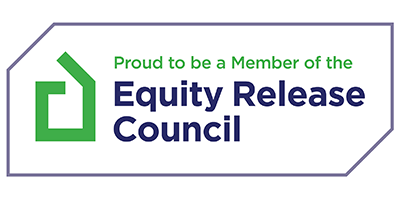In this article
For homeowners aged 55 and over, a lifetime mortgage can offer a way to purchase a new home without taking on traditional mortgage repayments.
While most people associate equity release with unlocking cash from a property they already own, some lenders allow you to use a lifetime mortgage to help buy a new home instead.
This could be an option if you’re looking to downsize, move closer to family, or find a more suitable property for later life.
That said, using a lifetime mortgage to fund a property purchase works differently from a standard mortgage, and it’s important to understand both the benefits and potential drawbacks before making a decision.
Speak to an Advisor – It’s Free!
Schedule a free callback from one of our experts today.
- All situations considered
- Transparent and honest mortgage advice
- We search 1000s of purchase and remortgage deals
Our customers rate us 4.9/5
How Does a Lifetime Mortgage Work for Buying a New Home?
A lifetime mortgage allows you to borrow a percentage of your property’s value, with no monthly repayments required.
The loan, plus any interest, is repaid when the property is sold, usually when you move into long-term care or pass away.
When using this type of mortgage for a purchase, you would typically contribute a deposit, with the rest of the purchase price covered by the lifetime mortgage.
Here’s an example of how this might work in practice:
- You decide to buy a new home worth £300,000.
- A lender agrees to provide a lifetime mortgage covering £150,000 (the amount you can borrow depends on factors like age and property value).
- You cover the remaining £150,000 using savings, investments, or proceeds from selling your current home.
This setup allows you to move without needing a standard mortgage or using all your available cash. But there are some key considerations to be aware of.
What Are the Key Requirements?
Not every property will be eligible for a lifetime mortgage. Lenders have strict criteria, and certain types of homes may not qualify. This includes:
- Retirement properties or age-restricted housing.
- Leasehold flats with short remaining leases.
- Properties that are non-standard construction or in poor condition.
In addition, the amount you can borrow depends on factors like your age, the property value, and the lender’s affordability assessment. Generally, the older you are, the more you may be able to borrow.
Things to Consider Before Choosing a Lifetime Mortgage
While a lifetime mortgage offers the advantage of moving home without taking on traditional mortgage repayments, it’s not the right fit for everyone.
Interest accumulates over time, meaning the amount owed can grow significantly. Some lenders allow voluntary payments to reduce this, but without these, the debt can quickly increase.
Another important factor is inheritance. Because the loan is repaid when the property is sold, it can reduce the amount left to pass on to family.
If leaving a financial legacy is a priority, alternatives such as downsizing or a retirement interest-only mortgage might be worth considering.
Are There Other Options?
If a lifetime mortgage doesn’t feel like the right solution, there are other ways to approach buying a home later in life:
- Downsizing – Selling your current home and buying a more affordable property outright could free up funds without the need for borrowing.
- Retirement interest-only mortgage – This type of mortgage allows you to make monthly interest payments, keeping the loan balance steady while still securing the home you want.
- Standard mortgage options – Depending on your income and affordability, some lenders offer traditional mortgages into retirement, which could be worth exploring.
Speak to a Mortgage Advisor
Deciding how to fund a property purchase in later life is a significant decision, and a lifetime mortgage is just one of several possible solutions.
If you’re considering this option, speaking to a mortgage advisor can help you understand whether it’s the right fit or if another route might suit your circumstances better.







